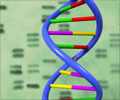- Uniform guidelines for postmortem work in India - (https://www.researchgate.net/publication/260182850_Uniform_guidelines_for_postmortem_work_in_India)
- Post-Mortem Examination as a Quality Improvement Instrument - (https://www.ncbi.nlm.nih.gov/pmc/articles/PMC6224542/)
- Forensic Autopsy - (https://www.ncbi.nlm.nih.gov/books/NBK539901/)
How an Autopsy or Post-mortem examination performed?
Post mortem rules in India
In accordance with Section 174 of the Criminal Procedure Code and/or Section 176 of the Criminal Procedure Code, Investigation Agencies-Police can give inquest to conduct the Medico legal Autopsy to find out the cause of death, to determine the mode, manner and the mechanism of death, for detailed examination and documentation of injuries, to reconstruct the crime scene, to aid in the identification of the victim, to provide a linkage of facts and events surrounding the death. Medico-Legal Postmortem examination is performed at the request of the Police, Magistrate/Court. The Medical Officer does not have the authority to waive off postmortem examination. In such circumstances, the medical officer can serve as an advisor, but the final decision is made by the Investigation Agency(3✔ ✔Trusted Source
Uniform guidelines for postmortem work in India
Go to source).
Autopsy procedure
Autopsy is a macroscopic examination of a deceased person's bodily cavities by a doctor. The microscopic examination may be used in addition to the macroscopic inspection, and depending on how severe the condition is, it may be necessary to remove a variety of tissue samples(5✔ ✔Trusted Source
Post-Mortem Examination as a Quality Improvement Instrument
Go to source). The extent of an autopsy varies from the examination of a single organ such as the brain, to a very extensive examination and the time period vary depending upon the technique, usually it takes about one hour to three hours for post-mortem examination.
Autopsy begins with a detailed external examination. The height, weight, identification marks (scars, tattoos) and other visible details are noted. After this, internal examination begins. A Y or U- shaped incision is made from both shoulders joining over the sternum (breast bone) and continuing down to the pubic bone (i.e region above the genitalia). The skin and underlying tissues are then separated. Rib cage and abdominal cavity are exposed. Neck and thoracic area are then exposed by opening the front of the rib cage.
Trachea (windpipe), thyroid gland, parathyroid glands, esophagus, heart, thoracic aorta and lungs are removed, followed by the removal of abdominal and pelvic organs intestines, liver, gallbladder and bile duct system, pancreas, spleen, adrenal glands, kidneys, ureters, urinary bladder, abdominal aorta, and reproductive organs are dissected out.
Next step is to remove the brain. An incision is made in the back of the skull from one ear to the other. The top flap of the scalp is forced forward and down over the face and the bottom flap is pulled down to the neck. Most of the skull is thus exposed. A vibrating saw is then used to remove the top of the skull. The entire brain is then gently taken out of the cranial vault. The spinal cord may also be taken.
Organs are then examined by a pathologist. Further dissection of the organs is performed as required. Microscopic examination may be required for tissue level studies.
The incisions made in the body are sewn closed after the autopsy. Removed organs are either retained or replaced to the body as demanded by the situation. Embalming and dressing of the body follows. Autopsied body is fit for normal funeral service.
Special studies done as part of the autopsy
A number of studies may be performed as part of autopsy. These include:
Cultures to identify infectious agents. Chemical analysis to assess drug levels, metabolic abnormalities Genetic studies Tissues may be stored frozen. Organs may be preserved and sent for Histo-pathological examination. In unidentified poisoning death cases, the samples of stomach and its contents, half of each kidney, half kg of liver and some part of intestine will be sent to Regional Forensic Science laboratories to identify the type of poisoning

Different techniques of Autopsy
- Virchow's method, in which the organs are removed one by one. It is the most common method used.
- Letulle's or en mass method, in this the cervical, thoracic, abdominal, and pelvic organs are removed as a single mass and then divided into organ blocks. This approach is useful for preserving circulatory supply and organ connections. It is the fastest method.
- Ghon’s method, it is also called as En-bloc removal in which the autopsy is limited to particular part or organ depend upon the history and diagnosis.
- Rokitansky method, it is insitu method in which the organs are not removed from the body to minimise spilling and exposure, this procedure is done in infectious condition(6✔ ✔Trusted Source
Forensic Autopsy
Go to source).












